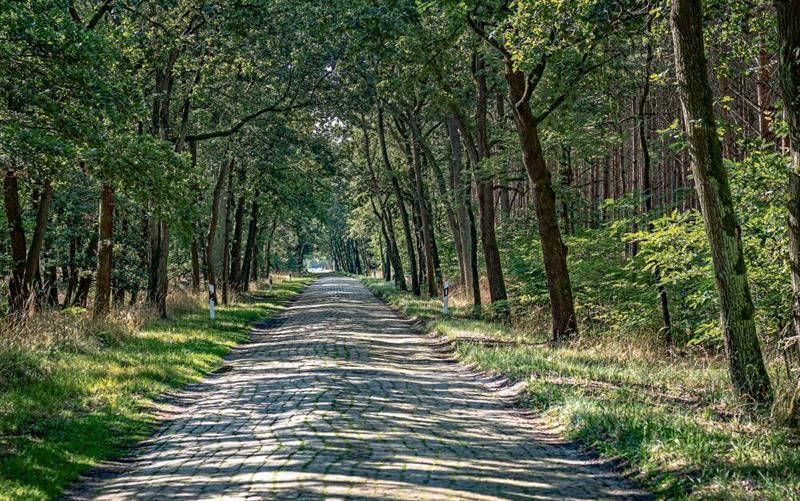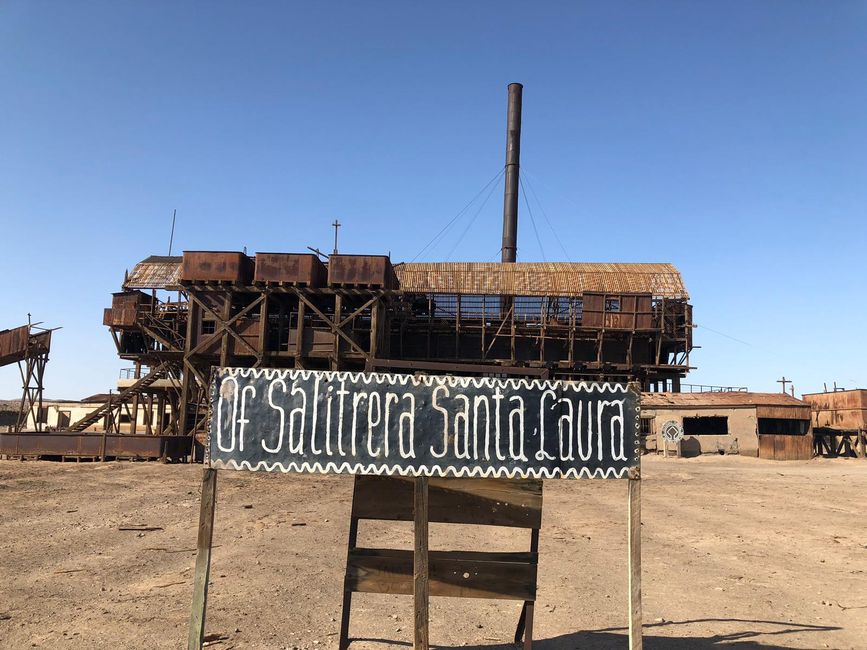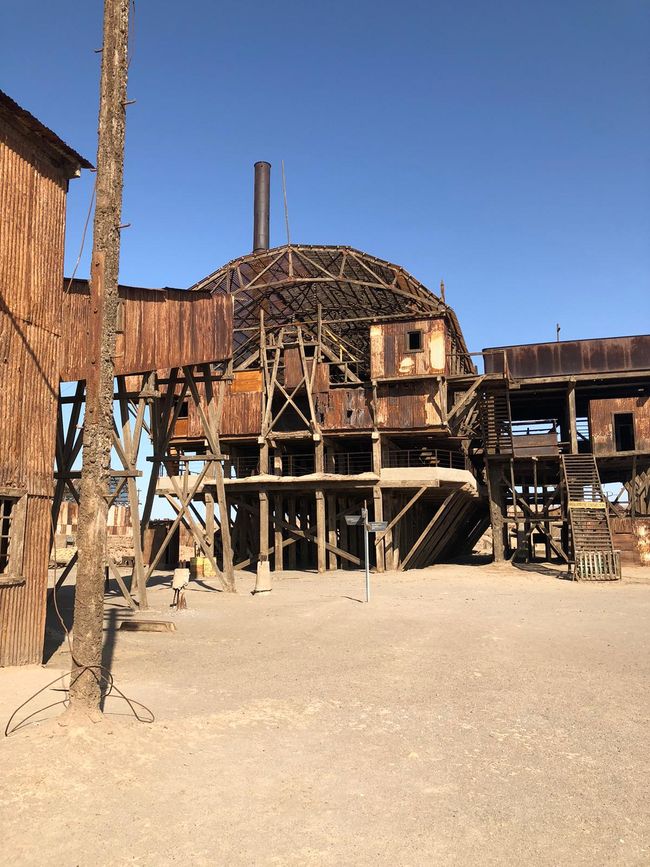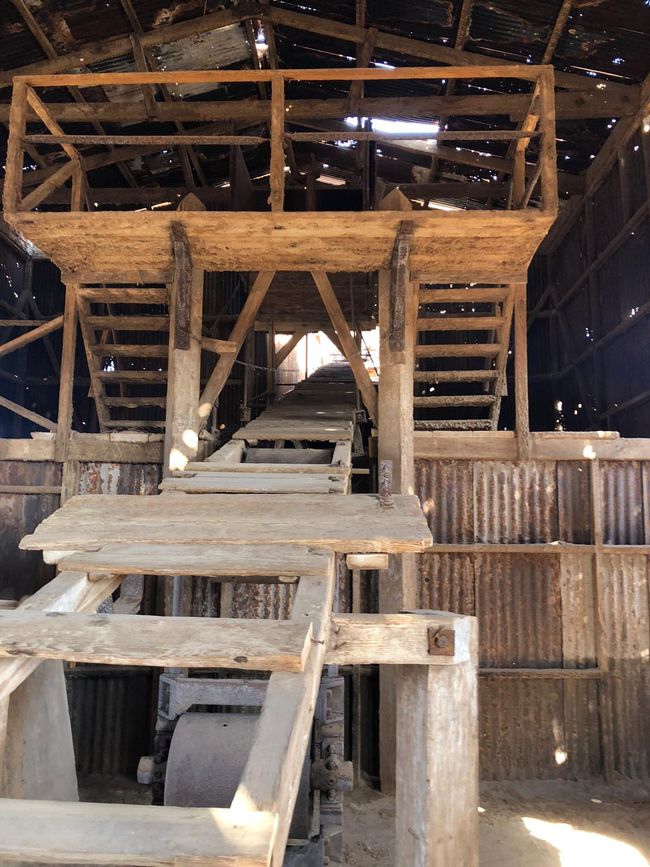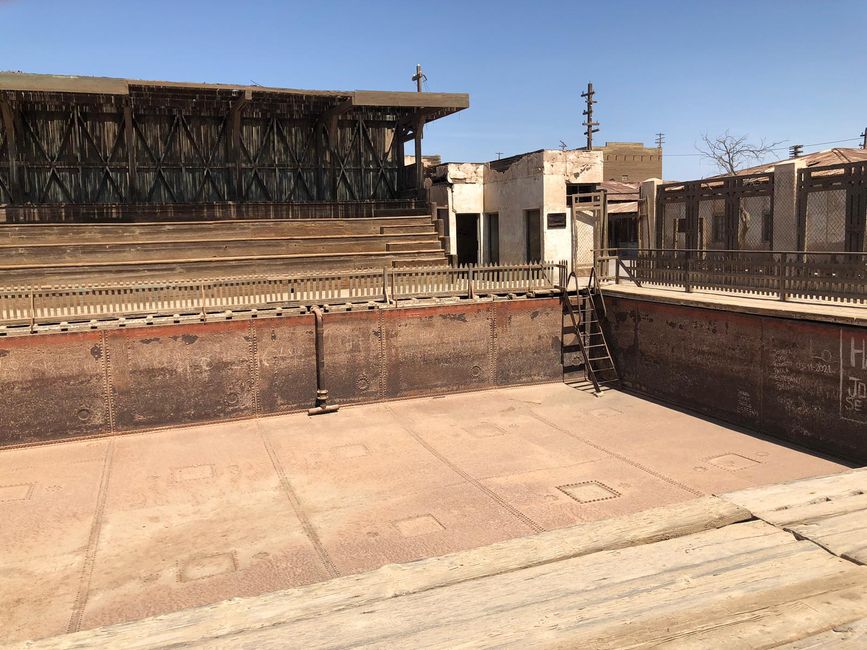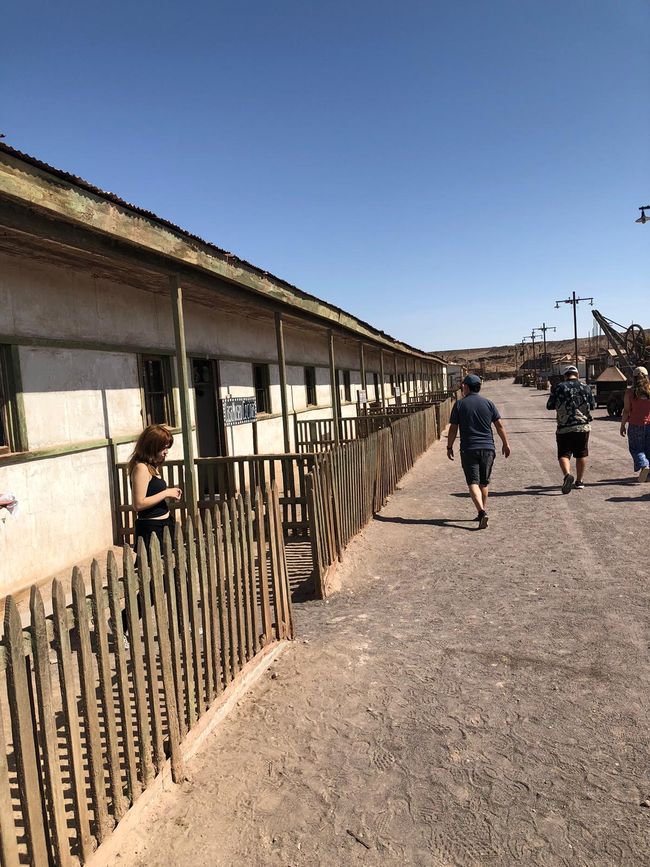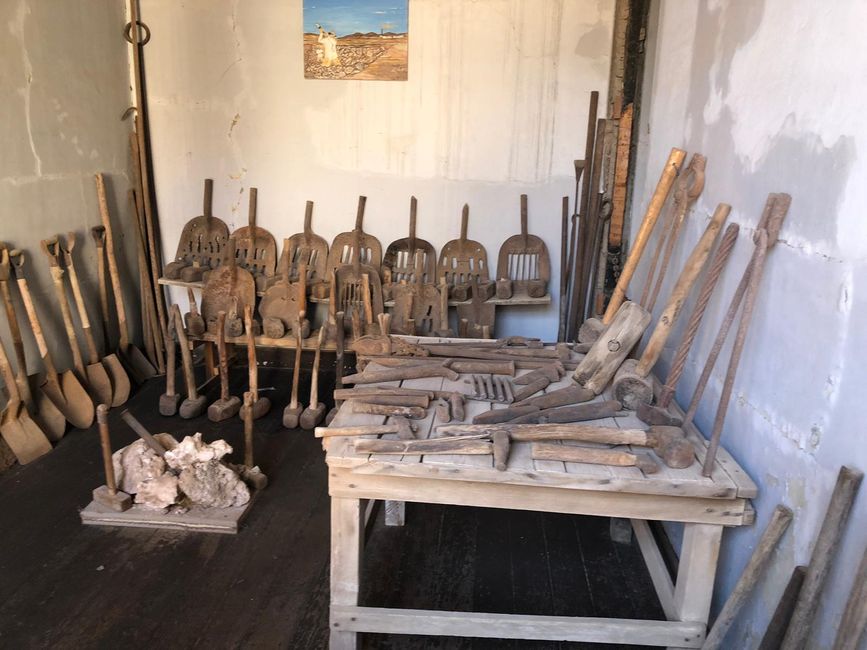IQUIQUE 18.01.2023
Ipapashiwe: 22.01.2023
Today we took a guided day tour that was supposed to take us to the abandoned saltpeter villages of Humberstone and Santa Laura. Unfortunately, these two places were not offered separately in any tourist offices, so we also had a dinosaur park, then Pica, the only oasis in Chile, and several small villages with churches on the agenda.
The ghost towns are former factory complexes where thousands of workers and their families worked and lived. Saltpeter extraction began around 1870 and the peak of the facilities was around 1940. Then, a German invention allowed for the artificial production of this substance, and the facilities were closed in 1960 as a result. Our guide was born in Humberstone, named after the English mining company that had control, and even attended the first grade of school here. Within the complex, there was a resident doctor, a swimming pool with a diving tower made from the metal plates of a sunken ship, a theater, a hotel (6 rooms), a market, and a church. The 3000 workers and their families formed more than just a village. In the early days, the workers had to work seven days a week from sunrise to sunset, but they did not receive money, only special tokens that could be exchanged (at great loss) for daily necessities. These slave-like conditions led to an uprising in 1907, which was suppressed with the shooting of many workers (to this day, exact numbers are not disclosed and the brutal repression is a black spot in Chile's history). However, the situation of the workers gradually improved afterwards: they began to receive proper wages, working hours became more humane, and living conditions became more structured. Accommodations for families and smaller accommodations for unmarried workers, protective clothing at the most dangerous workplaces, improved tools, and technical innovations in saltpeter production were the late results of the strike. However, the end was very abrupt: in 1960, the management (since then presumably Chilean) apparently announced the dismissal of all mine workers from one day to the next and allowed each person 30 hours to leave the premises, and that was it! Over the years, the factory buildings were looted and fell into disrepair. It was only when an organization (including many directly affected individuals) took responsibility that the decline was halted. Today, UNESCO funds are used to preserve the World Heritage site.
We had our included, very delicious lunch in a large public restaurant next to the Panamericana (A 5). Here, both mine workers in dirty work clothes and office workers in shirts and sometimes ties can be seen. Until now, it is not entirely clear to us what actually happens in the visually modern and operational factories nowadays?
Afterwards, we continued towards Pica, supposedly the only oasis in Chile. Here, we had the opportunity to visit a natural swimming pool, but we lost interest due to the small size of the water pool and the number of visitors. Besides, the cooling would have cost almost 8 € (in our lonely planet guidebook it stated 3.5 €)! The bathing suits offered for sale at the cash desk were supposed to cost 2.5 €?! So we strolled back to the meeting point from the swimming pool along the street, thus enabling some vendors to make a few more sales. However, it is also difficult, almost impossible, to resist freshly made fruit juices and soft drinks made from exotic fruits, which are, for our standards, simply delicious. They are made with the perfect ripeness and without the need for a half-circumnavigation of the globe! This was only topped by the Pisco Sour, which is mixed here in Pica with very small (smaller than limes!) lemons that are grown only in this oasis. So amazing!
The churches we visited along the way all had a special feature in their structure, but inside, they presented a challenge for the visitor. The completely kitschy depictions of Jesus (horribly suffering), the ever beautiful Mary (always motherly), and the distinguished Joseph (if present at all) raised more question marks in me than contemplation.
The final visit to a dinosaur park, which we did not enter, was also not one of the highlights of the day trip. The discussion about the tip for the guide and the driver was more interesting. I wanted to give at least 10,000 pesos (approximately 11 €), but the ladies thought it was too much. Shortly afterwards, Franzi approached a Chilean sitting in front of us, who could not comprehend the question of whether and how much tip would be appropriate for the tour guide. He had paid for the day trip and that was it. A woman from Chile explained to Franzi that it is not customary to give an extra tip, but everyone can decide for themselves. Soon, we gained an advantage in observation: in the morning, we were the last ones to board the tour bus, and now we were supposed to be the last ones! So we observed that no one gave anything to the tour leader. So we held back as well and adapted to the circumstances. I should also mention how it works in the restaurant: after consuming the meal, the bill is presented, which indicates the total amount and then this total amount with a 10% surcharge shortly below. The customer voluntarily pays this "total amount" if they were satisfied with the entire experience (food, drinks, service, etc.). No more tip is given.
We were the only ones who did that the next day, but that will be in the next post???
The evening ended again relaxing with one/two drinks and small leftovers on the balcony.
Phendula
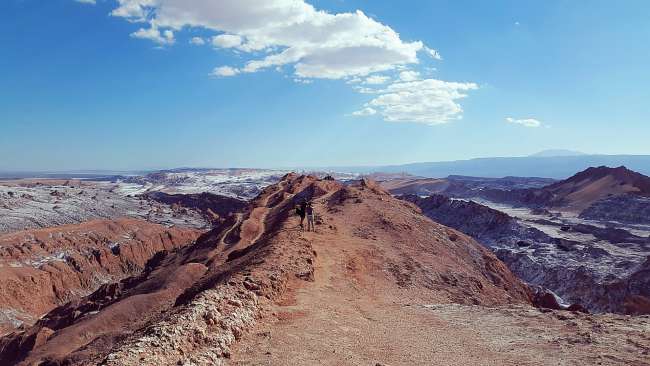
Iingxelo zohambo Tshile
